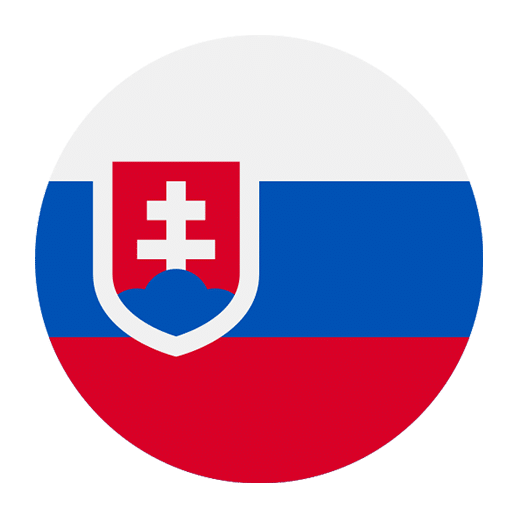Learning a new language can be an exciting and enriching experience. One of the key aspects of mastering any language is building a robust vocabulary that allows you to express a wide range of ideas. When it comes to Slovak, a Slavic language spoken primarily in Slovakia, understanding the vocabulary related to different types of weather can be particularly useful. Whether you’re planning to travel, have conversations with Slovak speakers, or simply expand your linguistic skills, this guide will help you navigate the essentials of Slovak weather vocabulary.
Basic Weather Terms
Before diving into more specific weather conditions, it’s crucial to get a grip on the basic Slovak words related to weather. Here are some fundamental terms:
– Počasie – Weather
– Teplota – Temperature
– Slnečno – Sunny
– Oblačno – Cloudy
– Vietor – Wind
– Dážď – Rain
– Sneh – Snow
– Búrka – Storm
These words form the foundation of weather-related conversations in Slovak. Knowing them will enable you to understand and discuss general weather conditions.
Sunny Weather
When the sun is shining and the skies are clear, you can use the following terms to describe the beautiful weather:
– Jasno – Clear
– Slnečno – Sunny
– Horúco – Hot
– Teplý – Warm
For example, if you want to say “It’s sunny today,” you would say, “Dnes je slnečno.”
Cloudy and Overcast Weather
Not every day can be sunny, and sometimes the sky is filled with clouds. Here are some terms to describe such weather:
– Oblačno – Cloudy
– Zamračené – Overcast
– Hmla – Fog
– Šero – Gloomy
To say “It’s cloudy,” you would use, “Je oblačno.”
Rainy Weather
Rain is a common weather phenomenon, and knowing how to talk about it in Slovak is essential:
– Dážď – Rain
– Prší – It’s raining
– Mrholenie – Drizzle
– Lejak – Downpour
– Prehánka – Shower
For example, “It’s raining heavily” translates to “Prší silno.”
Snowy Weather
When winter arrives, snow becomes a frequent topic of conversation. Here are some words to help you describe snowy conditions:
– Sneh – Snow
– Sneží – It’s snowing
– Vločka – Snowflake
– Záveje – Snowdrifts
– Ľad – Ice
To say “It’s snowing,” you would say, “Sneží.”
Stormy Weather
Storms can be dramatic and fascinating to talk about. Here are some Slovak terms to describe stormy weather:
– Búrka – Storm
– Hromy a blesky – Thunder and lightning
– Búrlivý – Stormy
– Víchrica – Gale
– Tornádo – Tornado
For example, “There is a thunderstorm” translates to “Je búrka s hromami a bleskami.”
Windy Weather
Wind can vary from a gentle breeze to a powerful gust. Here are some terms related to windy weather:
– Vietor – Wind
– Vietor fúka – The wind is blowing
– Vánok – Breeze
– Víchrica – Gale
– Silný vietor – Strong wind
To say “The wind is strong,” you would say, “Vietor je silný.”
Seasonal Weather
Understanding how weather changes with the seasons is also important. Here are some terms related to different seasons and their typical weather conditions:
– Jar – Spring
– Leto – Summer
– Jeseň – Autumn
– Zima – Winter
Spring (Jar)
Spring is a time of renewal, and the weather can be quite variable. Here are some spring-related terms:
– Kvitnúci – Blooming
– Prehánky – Showers
– Teplý – Warm
– Veterný – Windy
For instance, “Spring is warm and windy” would be “Jar je teplá a veterná.”
Summer (Leto)
Summer is typically warm and sunny. Here are some terms to describe summer weather:
– Horúco – Hot
– Slnečno – Sunny
– Sparno – Sultry
– Sucho – Dry
To say “Summer is hot and dry,” you would use “Leto je horúce a suché.”
Autumn (Jeseň)
Autumn brings cooler temperatures and often more rain. Here are some terms to describe autumn weather:
– Chladno – Cool
– Oblačno – Cloudy
– Dážď – Rain
– Veterno – Windy
For example, “Autumn is cool and rainy” translates to “Jeseň je chladná a daždivá.”
Winter (Zima)
Winter is characterized by cold temperatures and often snow. Here are some terms to describe winter weather:
– Chladno – Cold
– Sneží – It’s snowing
– Ľad – Ice
– Mráz – Frost
To say “Winter is cold and snowy,” you would say “Zima je chladná a zasnežená.”
Weather-Related Activities
Talking about the weather often involves discussing activities that are influenced by it. Here are some common weather-related activities and their Slovak translations:
– Chodenie na prechádzky – Going for walks
– Turistika – Hiking
– Plávanie – Swimming
– Lyžovanie – Skiing
– Korčuľovanie – Ice skating
– Opekačka – Barbecue
For example, “I like hiking in the summer” would be “Rád chodím na turistiku v lete.”
Weather Forecast
Understanding a weather forecast is a practical skill. Here are some terms you might encounter in a Slovak weather forecast:
– Predpoveď počasia – Weather forecast
– Dnes – Today
– Zajtra – Tomorrow
– Teplota – Temperature
– Maximálna teplota – Maximum temperature
– Minimálna teplota – Minimum temperature
– Pravdepodobnosť dažďa – Probability of rain
To say “The weather forecast for today is sunny,” you would use “Predpoveď počasia na dnes je slnečno.”
Expressions and Idioms
Every language has its own set of expressions and idioms related to the weather. Here are a few in Slovak:
– Mať hlavu v oblakoch – To have one’s head in the clouds (to be daydreaming)
– Byť pod mrakom – To be under a cloud (to be in a bad mood)
– Prší šťastie – It’s raining happiness (to be very happy)
For example, “He always has his head in the clouds” would be “Vždy má hlavu v oblakoch.”
Conclusion
Mastering weather-related vocabulary in Slovak can significantly enhance your ability to engage in everyday conversations and understand weather forecasts. From basic terms like počasie (weather) and teplota (temperature) to more specific words like sneží (it’s snowing) and vietor fúka (the wind is blowing), this guide provides a comprehensive overview of essential Slovak weather vocabulary.
Remember, language learning is a gradual process, and the more you practice, the more confident you’ll become. So, the next time you find yourself talking about the weather, try using some of these Slovak terms. Happy learning!

